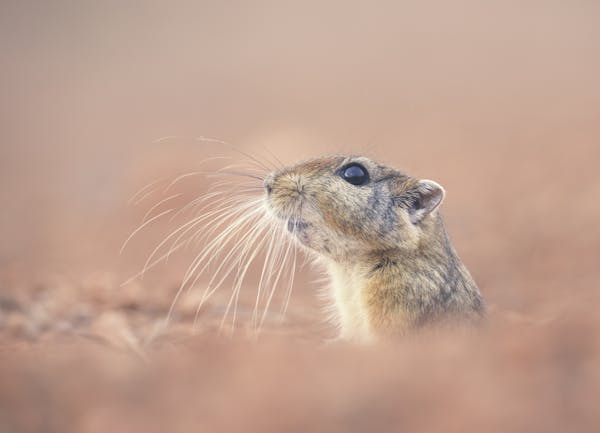Introducing ‘dark DNA’ – the phenomenon that could change how we think about evolution
Author:Adam Hargreaves Postdoctoral Research Fellow, University of Oxford
DNA sequencing technology is helping scientists unravel questions that humans have been asking about animals for centuries. By mapping out animal genomes, we now have a better idea of how the giraffe got its huge neck and why snakes are so long. Genome sequencing allows us to compare and contrast the DNA of different animals and work out how they evolved in their own unique ways.
DNAシーケンス技術は、人類が何世紀にも亘って動物に抱いてきた疑問を解明に励む科学者の助けになっている。動物のゲノムをマッピングすることで、キリンがなぜ大きな首を持つようになったのか、ヘビはなぜあんなに長いのか、といった疑問が解明された。ゲノム解読によって、さまざまな動物のDNAを比較検討し、それぞれの動物がどのように独自の進化を遂げたかを解明することが可能である。
But in some cases we’re faced with a mystery. Some animal genomes seem to be missing certain genes, ones that appear in other similar species and must be present to keep the animals alive. These apparently missing genes have been dubbed “dark DNA”. And its existence could change the way we think about evolution.
しかし、場合によっては謎に直面することもある。ある動物のゲノムには、特定の遺伝子が欠落しているようであり、この遺伝子は、他の類似種に存在し、動物を生かすために存在しなければならないものである。このように明らかに欠けている遺伝子は、「ダークDNA」と呼ばれている。そして、その存在は、進化についての考え方を変えるかもしれない。
My colleagues and I first encountered this phenomenon when sequencing the genome of the sand rat (Psammomys obesus), a species of gerbil that lives in deserts. In particular we wanted to study the gerbil’s genes related to the production of insulin, to understand why this animal is particularly susceptible to type 2 diabetes.
私と同僚は、砂漠に生息するスナネズミの一種、サンドラット(Psammomys obesus)のゲノムを解析したときに、この現象に初めて遭遇した。特に、この動物が2型糖尿病になりやすい理由を知るために、インスリンの産生に関連するスナネズミの遺伝子を研究したかった。
But when we looked for a gene called Pdx1 that controls the secretion of insulin, we found it was missing, as were 87 other genes surrounding it. Some of these missing genes, including Pdx1, are essential and without them an animal cannot survive. So where are they?
しかし、インスリンの分泌を制御するPdx1という遺伝子を探したところ、その周囲にある87個の遺伝子と同様に欠落していることがわかった。Pdx1をはじめ、欠損している遺伝子の中には、それがないと動物が生きていけない必須遺伝子がある。では、それらはどこにあるのだろうか?
The first clue was that, in several of the sand rat’s body tissues, we found the chemical products that the instructions from the “missing” genes would create. This would only be possible if the genes were present somewhere in the genome, indicating that they weren’t really missing but just hidden.
最初の手がかりは、サンドラットの体のいくつかの組織から、「欠落」した遺伝子の命令が作り出すはずの化学物質が見つかったことである。これは、遺伝子がゲノムのどこかに存在する場合にのみ可能なことで、実際には欠落しているのではなく、ただ隠されているだけであることを示している。
The DNA sequences of these genes are very rich in G and C molecules, two of the four “base” molecules that make up DNA. We know GC-rich sequences cause problems for certain DNA-sequencing technologies. This makes it more likely that the genes we were looking for were hard to detect rather than missing. For this reason, we call the hidden sequence “dark DNA” as a reference to dark matter, the stuff that we think makes up about 25% of the universe but that we can’t actually detect.
これらの遺伝子のDNA配列は、DNAを構成する4つの「塩基」分子のうち、GとCの分子が非常に多く含まれている。GCが多い配列は、ある種のDNAシーケンスにとって問題となることが分かっている。そのため、私たちが探していた遺伝子は、見つからないというより、検出しにくい可能性が高い。このため、私たちは、宇宙の約25%を占めると考えられているが、実際には検出できない暗黒物質になぞらえて、この隠れた配列を「ダークDNA」と呼んでいる。

By studying the sand rat genome further, we found that one part of it in particular had many more mutations than are found in other rodent genomes. All the genes within this mutation hotspot now have very GC-rich DNA, and have mutated to such a degree that they are hard to detect using standard methods. Excessive mutation will often stop a gene from working, yet somehow the sand rat’s genes manage to still fulfil their roles despite radical change to the DNA sequence. This is a very difficult task for genes. It’s like winning Countdown using only vowels.
サンドラットのゲノムをさらに研究した結果、特にその一部分に、他のげっ歯類のゲノムには見られない多くの変異があることがわかった。この変異のホットスポット内の遺伝子はすべて、GCリッチなDNAを持ち、標準的な方法では検出が困難なほど変異している。過剰な変異は遺伝子の働きを停止させることが多いが、サンドラットの遺伝子は、DNA配列の急激な変化にもかかわらず、何とかその役割を果たすことができている。これは、遺伝子にとって非常に難しい課題である。母音だけを使ってカウントダウンに勝つようなものだ。
This kind of dark DNA has previously been found in birds. Scientists have found that 274 genes are “missing” from currently sequenced bird genomes. These include the gene for leptin (a hormone that regulates energy balance), which scientists have been unable to find for many years. Once again, these genes have a very high GC content and their products are found in the birds’ body tissues, even though the genes appear to be missing from the genome sequences.
このようなダークDNAは、これまでにも鳥類で発見されている。科学者たちは、現在配列が決定している鳥類のゲノムから、274個の遺伝子が「欠落」していることを発見した。この中には、科学者が長年見つけることができなかったレプチン(エネルギーバランスを調整するホルモン)の遺伝子も含まれている。今回も、ゲノム配列から遺伝子が欠落しているように見えても、これらの遺伝子はGC含量が非常に高く、その産物は鳥の体内組織で発見されている。
Shedding light on dark DNA
ダークDNAに光を当てる
Most textbook definitions of evolution state that it occurs in two stages: mutation followed by natural selection. DNA mutation is a common and continuous process, and occurs completely at random. Natural selection then acts to determine whether mutations are kept and passed on or not, usually depending on whether they result in higher reproductive success. In short, mutation creates the variation in an organism’s DNA, natural selection decides whether it stays or if it goes, and so biases the direction of evolution.
大半の教科書に掲載される進化の定義とは、突然変異と自然淘汰という2つの段階を経て起こるものである。DNAの突然変異は一般的かつ継続的なプロセスであり、完全にランダムに発生する。自然選択は、突然変異を保存し、継承するかどうかを決定するもので、通常は繁殖の成功率が高くなるかどうかによって決定される。つまり、突然変異が生物のDNAに変異をもたらし、自然選択が変異を残すか残さないかを決定し、進化の方向性を決定するのである。
But hotspots of high mutation within a genome mean genes in certain locations have a higher chance of mutating than others. This means that such hotspots could be an underappreciated mechanism that could also bias the direction of evolution, meaning natural selection may not be the sole driving force.
しかし、ゲノムの中で変異が多いホットスポットは、特定の場所にある遺伝子が他の遺伝子より変異する確率が高いことを意味する。つまり、このようなホットスポットは、進化の方向性を偏らせる可能性のある、あまり評価されていないメカニズムである可能性がある。
So far, dark DNA seems to be present in two very diverse and distinct types of animal. But it’s still not clear how widespread it could be. Could all animal genomes contain dark DNA and, if not, what makes gerbils and birds so unique? The most exciting puzzle to solve will be working out what effect dark DNA has had on animal evolution.
今のところ、ダークDNAは非常に多様で異なる2種類の動物に存在するように見受けられる。しかし、ダークDNAがどの程度広く存在しうるかは、まだ明らかではない。すべての動物のゲノムにダークDNAが存在する可能性はあるのだろうか?もしそうでないとしたら、スナネズミと鳥は何がそんなにユニークなのだろうか?ダークDNAが動物の進化にどのような影響を与えたかを解明することが、最もエキサイティングな謎解きとなることだろう。
In the example of the sand rat, the mutation hotspot may have made the animal’s adaptation to desert life possible. But on the other hand, the mutation may have occurred so quickly that natural selection hasn’t been able to act fast enough to remove anything detrimental in the DNA. If true, this would mean that the detrimental mutations could prevent the sand rat from surviving outside its current desert environment.
サンドラットの例では、突然変異のホットスポットが、この動物の砂漠での生活への適応を可能にしたのかもしれない。しかし、その一方で、突然変異があまりにも早く起こったために、自然淘汰が十分に働かず、DNA中の有害なものが取り除かれなかったのかもしれない。もしそうだとすると、この有害な変異によって、サンドラットが現在の砂漠の環境以外で生き残ることができなくなる可能性があるということになる。
The discovery of such a weird phenomenon certainly raises questions about how genomes evolve, and what could have been missed from existing genome sequencing projects. Perhaps we need to go back and take a closer look.
このような奇妙な現象の発見は、ゲノムがどのように進化してきたのか、また、既存のゲノム配列決定プロジェクトから何が見落とされたのか、確かに疑問を投げかけるものである。私たちは、もう一度、じっくりと観察する必要があるのかもしれない。
